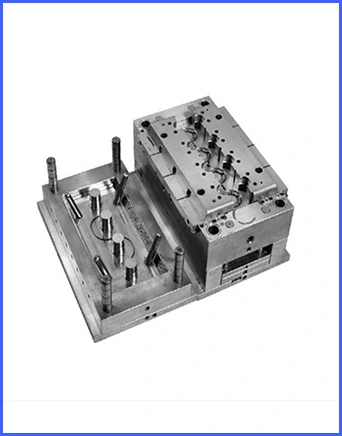Time to read: 6 min

Injection molding's versatility stems from its compatibility with a vast array of materials. This comprehensive guide explores the top 10 plastics used in injection molding, detailing their unique properties, applications, and the strategic considerations for material selection in your next project.
Navigating the Plastics Landscape for Injection Molding
The success of injection molding is largely attributed to its adaptability across a spectrum of plastic materials. Each material brings its own set of characteristics that make it suitable for specific applications, from household items to industrial components.
Acrylic (PMMA)
Acrylic, known for its transparency and shatter resistance, is a thermoplastic favored for its ease of machining post-molding. While it is prone to scratching and not ideal for extreme temperatures, its applications in decorative and protective casings are widespread.
Acrylonitrile Butadiene Styrene (ABS)
A cost-effective and impact-resistant material, ABS is a popular choice for automotive parts and sports equipment. Its resistance to chemicals and ability to be molded in various colors make it a versatile option, despite its sensitivity to sunlight and moisture.
Nylon Polyamide (PA)
Nylon's high toughness and heat resistance, coupled with its vibration-damping properties, make it an excellent material for injection molding. Its various grades, such as Nylon 66, offer alternatives to metallic components in high-stress applications, though its high shrinkage rate requires careful mold design.
Polycarbonate (PC)
With its exceptional toughness and transparency, polycarbonate is a top choice for high-temperature applications and optically clear components. However, its potential health risks limit its use in food and beverage industries.
Polyoxymethylene (POM)
POM's rigidity and dimensional stability make it ideal for precision parts and high-stress applications. Its low-friction properties and stability at low temperatures enhance its suitability for automotive components and mechanical parts.
Polypropylene (PP)
Approved by the FDA and known for its recyclability, PP is a common material for food containers and other household items. Despite its limitations in high-temperature applications and susceptibility to UV degradation, its user-friendliness and cost-effectiveness are notable.
Polystyrene (PS)
PS's brittleness and lightweight nature make it suitable for injection molding. Its resistance to moisture and chemical reactions, along with its uniform thermal shrinkage, make it ideal for toys, appliances, and medical equipment.
Polyethylene (PE)
Available in HDPE, LDPE, and PET forms, polyethylene is valued for its ductility, impact strength, and chemical resistance. HDPE's rigidity is preferred for molding large items, while LDPE's flexibility dominates the packaging industry.
Thermoplastic Elastomer (TPE)
TPE's blend of plastic and rubber properties offers flexibility, strength, and recyclability at a lower cost than most rubber alternatives. However, its limited temperature resistance and susceptibility to creep restrict its applications.
Thermoplastic Polyurethane (TPU)
TPU's hardness, compression strength, and resistance to abrasion and chemicals make it a high-performance material for extreme conditions. Its crystallinity and hardness, however, make it challenging to mold and require expert handling.
Selecting the Optimal Material for Your Injection Molding Project
Material selection is a critical step in the injection molding process, influenced by factors such as hardness, flexibility, cost, and temperature resistance. Consider the following when choosing the right plastic:
- Hardness: For high-performance applications, consider Nylon or TPU, with the latter being more costly.
- Flexibility: TPE and PP are suitable for flexible applications, with TPE offering better fatigue resistance.
- Cost: PP and PS are economically viable options that are readily available.
- Temperature Resistance: Nylon and ABS maintain properties at high temperatures, while POM remains stable in sub-zero conditions.
- Applications: Tailor your material choice to the specific requirements and end-use of the molded part.
Conclusion
Understanding the diverse range of plastics available for injection molding is essential for product developers and manufacturers. This guide has provided insights into the top 10 materials, their benefits, and limitations, along with practical advice for material selection.
Unofactory, a leader in injection molding services, offers a wide array of plastic materials and state-of-the-art manufacturing solutions. Our commitment to quality, cost-effectiveness, and customer service ensures that your project will be in capable hands. Contact us today to discuss your rapid prototyping needs.




